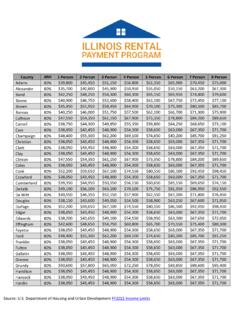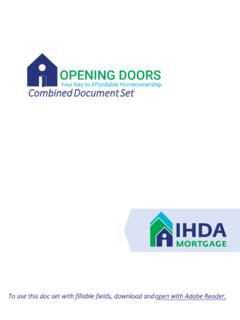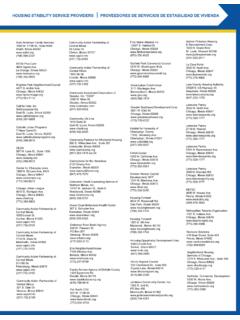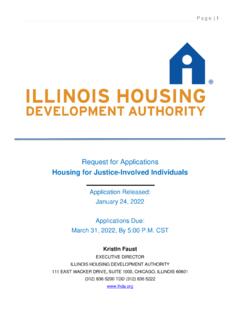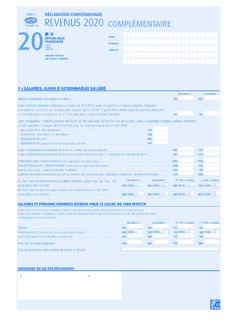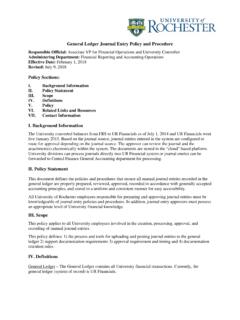Transcription of The Low-Income Housing Tax Credit (LIHTC) program was ...
1 1 2 Contents I) Introduction .. 4 A. Purpose of the QAP .. 4 B. Authority Mission Statement .. 4 C. Authority Policy Priorities & Objectives .. 4 D. Code Required Selection Criteria and Preferences .. 5 E. State Comprehensive Housing Planning Act .. 6 II) General Provisions .. 6 A. Changes to the QAP .. 6 B. Authority Rights .. 6 C. Authority Limitations .. 7 D. Project Application Disclosures .. 7 E. The Fair Housing Act .. 8 F. Affirmatively Furthering Fair Housing .. 8 III) Tax Credit Information .. 8 A. Tax Credit Calculation .. 8 B. 4% Tax Credit Projects .. 9 C. 9% Tax Credit Projects .. 11 IV) Geographic Set-Asides .. 11 A. Percentages for All Set-Asides .. 11 B. Set-Aside Descriptions .. 12 C. Statewide Set-Aside .. 12 V) Project Application Process.
2 12 VI) Preliminary Project Assessment .. 13 A. About the 13 B. Timing .. 13 C. PPA Submission .. 13 D. Fees .. 13 E. PPA Evaluation .. 13 F. PPA Review/Outcome Strategy .. 15 G. PPA Notification Letters .. 16 H. Conditional Approval/Unmet Conditions .. 16 I. Changes between PPA and Project Application .. 17 VII) Project Application Overview .. 17 A. Submission & Timing .. 17 B. Fees .. 18 C. Project Application Materials .. 18 D. Evaluation .. 18 E. Conditional Allocation of Tax Credits .. 19 VIII) Project Application - Mandatory Components .. 19 A. Project Narrative .. 19 B. Public Outreach .. 20 C. Community Engagement .. 20 D. Site Control .. 20 E. Zoning .. 21 F. Site Physical Information .. 22 3 G. Historic Preservation .. 24 H. Phase I Environmental .. 24 I.
3 Architectural Requirements .. 24 J. Construction Cost Breakdown .. 26 K. Projects Involving Rehabilitation & Adaptive Reuse .. 27 L. Relocation .. 28 M. Market Study .. 28 N. Development Team .. 29 O. Financial Feasibility .. 31 P. Enterprise Green Communities .. 32 Q. Special Population Considerations .. 32 R. Permissible Waiver Requests .. 33 S. Application Certification, Organizational Chart, and Identity of Interest 33 IX) Project Application - Scoring Components .. 34 Scoring Overview .. 34 A. Project Design and Construction .. 35 B. Energy Efficiency and Sustainability .. 36 C. Community Characteristics .. 38 D. Development Team Characteristics .. 44 E. Financial Characteristics .. 46 F. Housing Policy and Objectives .. 49 X) Project Modifications and Revocations.
4 50 A. Project Modifications .. 50 B. Request for Modifications .. 50 C. Revocation of a Conditional Allocation .. 50 XI) 9% Tax Credit Reservations, Carryover, and 10% Test .. 51 A. 9% Tax Credit Allocation .. 51 B. 9% Tax Credit Carryover Allocations .. 51 C. 9% Tax Credit Ten Percent (10%) Test .. 52 XII) Operations and Monitoring .. 52 A. Issuance of 8609 .. 52 B. Placement in Service .. 53 C. Extended Use Agreement .. 53 D. Required Monitoring .. 53 Appendix A: Definitions .. 56 4 I) Introduction A. Purpose of the QAP The Low-Income Housing Tax Credit (LIHTC) program was created by the United States Congress in 1986 to promote the development of affordable Housing for Low-Income individuals and families. The Internal Revenue Service (IRS) regulations for the Tax Credit program are found under Section 42 of the Code of 1986, as amended.
5 As an allocating agency for the Tax Credit program in Illinois, the Illinois Housing Development Authority (Authority) is required to publish a Qualified Allocation Plan (QAP) that details how it intends to award the tax credits. Pursuant to Section 42 of the Code, the QAP describes criteria the Authority considers in evaluating Projects and development teams applying for an Allocation of Tax Credits. The QAP addresses the process for obtaining Tax Credits either through the issuance of a 42(m) Letter for Projects financed through the issuance of tax-exempt bonds (4% Tax Credits) or through the competitive selection process (9% Tax Credits). All Projects planning to apply to the Authority for an allocation of 4% or 9% Tax Credits must first submit a Preliminary Project Assessment to the Authority prior to submitting a Project Application.
6 Please visit the Developer Resource Center on IHDA s website for further information on applying for Authority tax Credit resources. B. Authority Mission Statement The mission of the Authority is to finance the creation and preservation of affordable Housing throughout the State of Illinois. We partner with lenders, developers, local government, nonprofits, community groups, and others to deliver low-cost financing programs. We provide financial assistance to low- and moderate-income homebuyers and homeowners, offer resources to developers who build or preserve affordable and mixed-income rental Housing , and provide oversight for more than 1,900 affordable rental communities across the state. C. Authority Policy Priorities & Objectives The QAP provides a framework for the development and rehabilitation of affordable rental units that support the achievement of broader policy objectives.
7 The Authority employs various planning and research methods to better understand the diverse Housing needs of Illinois residents, identify policy priorities and goals, and develop policy objectives in support of those goals. These research methods are designed to identify opportunities for the Authority to target its investments effectively and efficiently, nimbly responding to an ever-changing social and economic climate. This research utilizes both quantitative and qualitative methods including, but not limited to, development of the Annual Comprehensive Housing Plan and the Illinois Housing Blueprint, public meetings such as the QAP Summits, and formation of an internal QAP Task Force. The Authority s current policy priorities, goals, and objectives for the 2022-2023 QAP are discussed below.
8 These priorities have been identified in response to broader economic and socio-demographic conditions, as well as key Housing needs at the state level. Each of the four (4) focus areas is supported by specific strategies. 1. Racial Equity. Discrimination in the US Housing market has contributed to both social and economic inequity manifest in the widening of the racial wealth gap and historic disinvestment in communities of color. The Authority s approach to address racial equity is rooted in increasing 5 opportunities for wealth-building for BIPOC entrepreneurs as well as creating opportunities for community-level wealth expansion. The Authority wants to prioritize projects that improve resident outcomes by expanding neighborhood assets and investments. QAP-related strategies supporting this focus area include: Improving participation by Minority-owned Based Enterprise/Women-owned Based Enterprises (MBE/WBE) on LIHTC projects, especially BIPOC-led firms; and Prioritizing project concepts that improve quality of life and Housing quality.
9 2. Access to Funding. Challenges to accessing affordable Housing development financing, especially for small- to mid-sized firms, has an adverse impact on innovation, dampening creativity and flexibility in the provision of affordable Housing that serves Illinoisans. IHDA is striving to make its application processes more user-friendly and intuitive in a way that will further diversify the developers that apply, the geographic areas these developers work in, and the types of projects it funds. QAP-related strategies supporting this focus area include: More specificity to the preliminary application (PPA) process and to the application clarification period; Less reliance on letters of support and more reliance on specific local involvement; and, Availability of more free site selection tools.
10 3. Special Populations. IHDA continues its mission to finance Housing development for populations with special needs. This includes, but is not limited to, persons living with disabilities, experiencing homeless, at risk of homelessness, and recently incarcerated populations. QAP-related strategies supporting this focus area include: Prioritizing units for extremely Low-Income (ELI) households by incentivizing rental assistance and deeper income targeting; and, Continuing to integrate Statewide Referral Network (SRN) units to increase the supply of community-integrated Permanent Supportive Housing in Illinois. 4. Sustainability. Improving Housing quality through highly efficient building materials, Housing sites that are integrated within community fabric, and reducing utility costs are tenant-focused initiatives that can, over the long-term, contribute to resident wellbeing.
